Search results for “tomorrow fund”
4/19/2006 States and feds agree to work together to restore and enhance the Driftless Area EMBARGOED UNTIL 10:00 a.m., April 19, 2006 Contact: Duke Welter, 715-579-7538 or Kathleen Campbell, 571-274-0597 States and Feds Agree to Work Together to Restore and Enhance the Driftless Area Wisconsin, Minnesota, Iowa and Illinois join with the U.S. Department of…
7/23/2001 Sennebec Pond Association & Trout Unlimited Host Information Meeting Sennebec Pond Association & Trout Unlimited Host Information Meeting Contact: 7/23/2001 — — July 23, 2001 Union, Maine . . . The Sennebec Pond Association and the St. George Chapter of Trout Unlimited will host a Public Information Meeting on Monday, July 30 to explain…

Morgan Werner, Matt Anderson, Niyah Banfill, and Meriah Gannon planting riparian trees along Blakeslee Creek. By Jamie Vaughan Rockford locals may have noticed green-clad students working throughout the community this summer, usually covered in mud and always sporting a smile. It may look like a typical summer gardening job, but don’t be fooled: This group…
11/06/2007 Whirling Disease Foundation Merges with Trout Unlimited November 6, 2007 Media Contacts: Dave Kumlien, Executive Director, Whirling Disease Foundation 406-570-0023Jack Williams, Senior Scientist, Trout Unlimited 541-261-3960 FOR IMMEDIATE RELEASE: Whirling Disease Foundation Merges With Trout UnlimitedAlliance Bolsters Efforts to Combat the Impacts of Aquatic Nuisance Species and Whirling Disease on Nations Trout and Salmon…
06/25/2008 Trout Unlimiteds Upper Big Lost Project Will Receive Proceeds From Silver Creek Outfitters Film Festival June 25, 2008 FOR IMMEDIATE RELEASE: Contact: Ed Northen: 208-788-316 Trout Unlimiteds Upper Big Lost Project Will Receive Proceeds From Silver Creek Outfitters Film Festival KETCHUM, ID The Hemingway Chapter of Trout Unlimited (TU) will receive the proceeds from…
Contact:Russ Schnitzer, (307) 438-1365Steve Moyer, (703) 284-9406 FOR IMMEDIATE RELEASE: Trout Unlimited Praises Senate Reauthorization of Farm Bill, Urges Swift House Passage Conservation Programs a Proven Investment in Nation’s Outdoor Heritage and Rural Communities Arlington, Va. Trout Unlimited today commended the U.S. Senate for voting to reauthorize the Farm Bill and ensure that its highly…
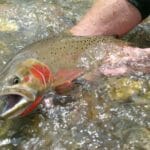
chalk_creek_bonneville.jpg A Chalk Creek native Bonneville cutthroat: Reconnected to spawning habitat FOR IMMEDIATE RELEASE Nov. 6, 2013 Contact: Paul Burnett, 801-436-4062 pburnett@tu.org Tim Hawkes, 801-928-9008 thawkes@tu.org Trout Unlimited, rancher boost fish habitat on Chalk Creek Project reconnects Weber River cutthroats with spawning habitat (Salt Lake City)The Weber River is home to one of Utahs most…

For Immediate Release: Wednesday, Feb. 26, 2014 Contacts: Judith Kohler, National Wildlife Federation, 303-441-5163; kohlerj@nwf.org Katie McKalip, Theodore Roosevelt Conservation Partnership, 406-240-9262; kmckalip@trcp.org; Shauna Sherard, Trout Unlimited, 307-757-7861; ssherard@tu.org Youths, DOI secretary talk public lands Winners of sportsmens essay contest share with Secretary Jewell how their experiences on public lands have shaped their lives WASHINGTON…
Senator Cantwells precedent-setting water and fisheries legislation passes Senate Energy and Natural Resources Committee CONTACT: Michael Garrity, American Rivers, 206-852-5583 Lisa Pelly, Trout Unlimited, 509-630-0467 Ben Greuel, The Wilderness Society, 360-670-2938 (Nov. 19, 2015) Seattle, Wash. Today federal legislation to protect and enhance the Yakima River basins fisheries, ecosystem and water supply was passed by…
Oct. 31, 2016 Contact: Laura Ziemer, lziemer@tu.org, (406) 599-2606 Trout Unlimited, Senior Counsel and Water Policy Advisor Steve Moyer, smoyer@tu.org, (571) 274-0593 Trout Unlimited, Vice-President for Governmental Affairs FOR IMMEDIATE RELEASE Trout Unlimited lauds WaterSMART program New criteria prioritizes both water savings and river health WASHINGTON, D.C. Trout Unlimited today praised the Bureau of Reclamations…
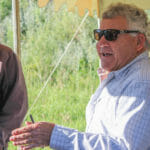
Mark Fowden retired ater 39 years with Wyoming Game and Fish in early January. He passed away March 31. Photo courtesy Wyoming game and Fish. By Cory Toye Wyoming lost a man who dedicated his life to the conservation and management of our great fisheries when Mark Fowden passed away March 31. Mark led a…
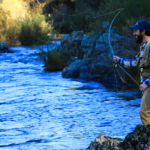
Fishing the Bear River. This reach would be inundated by the proposed Centennial Dam. By Chandra Ferrari With California just emerging from five years of punishing drought, there continues to be a lot of discussion about creating more water storage. While the fastest and most affordable way to capture and store more water is to…
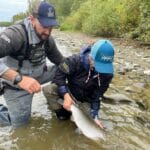
Here lies the promise of our plans to develop a shared agenda of priority waters.
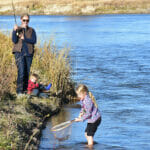
Check out some of our favorite ways to explore wildlife refuges, and then get out there and experience them yourself.
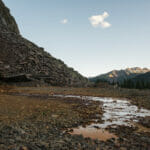
Ahead of the next U.S. mining boom, we need to stand up for clean rivers and wild trout.
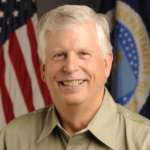
Tom Tidwell is retiring as Chief of the US Forest Service. It is difficult to overstate the importance of the 191 million acres that the Forest Service manages to trout and salmon. Half of the blue-ribbon trout streams in the country flow across national forests. A vast majority of western native trout and salmon depend…
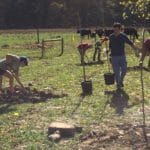
Volunteers plant trees along a small stream in the headwaters of the Chesapeake Bay. Healthy riparian buffers are important for streams. By Steve Moyer Healthy trees, in addition to Trout Unlimited members and mayflies, has to be high on a trout’s best friends list. That is why TU is applauding Sen. Bob Casey (D-Pa.) for…
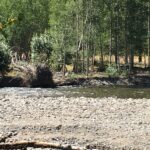
Eroding banks along the Bridge to Bridge project area By Chris Wood The sign behind the two-person Trout Unlimited office in Hailey, Idaho, reads, “Parking for Trout Unlimited only. If towed, call Dick York Towing.” It is an inside-Hailey joke as Keri York’s Dad ran Dick York Towing—the only towing business in the Big Wood…

By: TU Alaska staff Opponents of Ballot Measure One have bankrolled a misinformation machine. What’s more, they have painted the measure as an end to all development and jobs in Alaska. It is an attempt to scare Alaskans into voting against their own jobs. The truth is, our salmon habitat creates jobs and we can’t…

By Chris Wood Montana wisely chose to stop stocking trout in 1974. Alaska’s sheer size and quality habitat make it the most desired destination-fishery for very large native rainbow trout and salmon and steelhead. Passing separat e ballot initiatives in each state will ensure that both states remain iconic. In Montana, I-186 would allow the…














